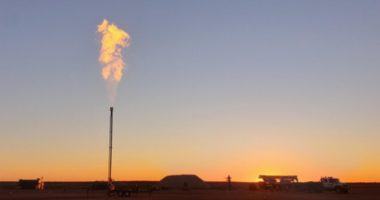- Byron Energy (BYE) logs additional hydrocarbon pay at the G5 well within its South Marsh Island 58 platform in the Gulf of Mexico
- After reaching a total depth of 10,228 feet, real-time logging identified hydrocarbons that BYE believes are most likely oil in the N2 sand interval and the N4 sand
- All up, the G5 well has now logged 128 feet of TVT net hydrocarbon pay in five sands, and production is scheduled for July
- Byron has also progressed plans to expand the drilling program by securing a mat jack-up rig to start work later this year, with an agreement executed for two additional wells
- Company shares are up 5.9 per cent and trading at 18 cents at 11:27 am AEST
Byron Energy (BYE) has logged additional hydrocarbon pay at the G5 well within its South Marsh Island 58 platform in the Gulf of Mexico.
Following repairs to the top drive of the drill rig, drilling of the well resumed on June 6.
After reaching a total depth of 10,228 feet, the company completed real-time logging and identified hydrocarbons that it said were most likely oil in the N2 sand interval and the N4 sand.
The N2 sand was the company’s primary target for this drilling work and logged 36 feet of true vertical thickness (TVT) net pay over a 76-foot interval, which CEO Maynard Smith said was “right in line” with expectations.
In the N4 sand, BYE logged 11 feet of TVT pay.
The latest results are in addition to 81 feet of TVT hydrocarbon pay identified in three sands, logged at a measured depth of 9650 feet before the drill rig had mechanical issues.
All up, the G5 well has logged 128 feet of TVT net hydrocarbon pay in five sands.
According to Mr Maynard, the well has established a “very large column” of oil and gas up-dip to the best N2 sand production on the dome.
In February, reserves were estimated by a third party to be gross 1P reserves of one million barrels of oil — net 840 thousand barrels — for the N2 sand using a predicted 50-foot TVT net pay as the basis.
While the N2 sand has proved to be thinner than predicted, Byron estimated production rates would fall in the range of 700 to 1000 barrels of oil per day, depending on reservoir drawdown across the perforations.
Byron said the long term stability of the initial rate depended on the strength of the aquifer support.
Moving forward, the N2 sand will be completed using modern frac pack sand control techniques.
Production from the G5 well is anticipated to begin in July, once a 5-inch production liner has been run and cemented to total depth.
Once production is underway, the drill rig will move to the G3 well for completion operations.
Byron has also made progress on its plan to expand the drilling program by securing a mat jack-up rig to start work later this year, with an agreement executed for two additional wells.
Byron Energy shares were up 5.9 per cent and trading at 18 cents at 11:27 am AEST.






